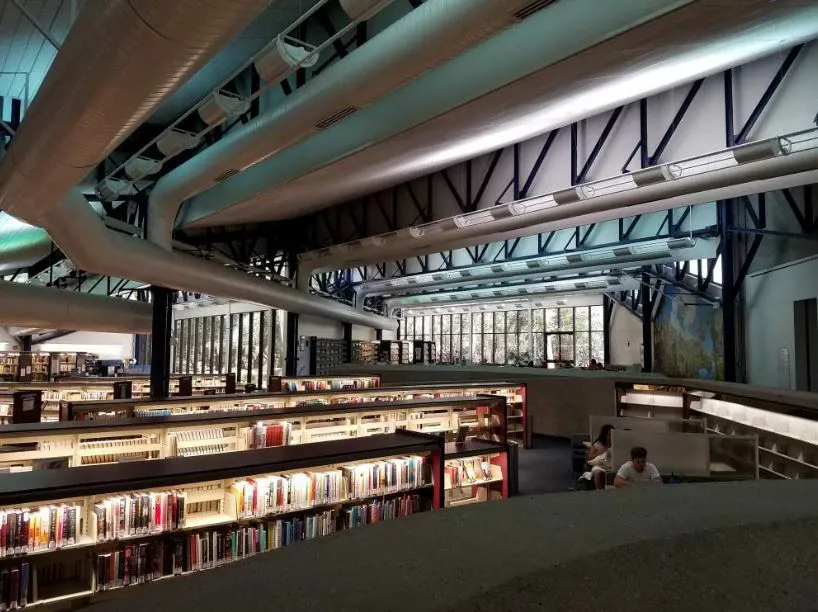Nestled in the serene city of Thousand Oaks, California, stands an edifice that encapsulates the evolution and history of the city – The Grant R. Brimhall Library.
This architectural marvel is not only a repository of knowledge but also serves as a testament to the city’s growth and transformation over time. Through its intricate design and distinct architectural features, it provides insights into the region’s past while underlining the progression towards modernity.
This article embarks on a journey through history, meticulously examining these remarkable facets and their significance in representing Thousand Oaks’ historical narrative.
The exploration of this monumental structure illuminates the interplay between architecture and societal development, revealing how each architectural phase corresponds with unique periods in Thousand Oaks’ history.
By delving deep into these aspects, one can comprehend how this iconic landmark has become entwined with community identity fostering a sense of belonging among its inhabitants.
## The Evolution of the City Reflected in the Building
The transformation of the Grant R. Brimhall Library over time not only mirrors the evolution of Thousand Oaks as a city, but also encapsulates the shifting paradigms in architectural design and community space planning.
The library’s inception in 1982 brought with it an architectural style that was reflective of its time – a blend of modernism with subtle hints of traditional elements, which resonated well with the city’s ethos and aspirations for progress while respecting its historical roots.
As Thousand Oaks expanded and evolved into an affluent suburban community, so did the library, adding expansions in 1991 and 2006 to accommodate growing patron needs. The most recent renovation highlights a shift towards sustainable design principles with features such as energy-efficient lighting systems and water-saving fixtures indicating responsiveness to contemporary ecological concerns.
Detailed analysis reveals how these structural transformations were guided by broader societal shifts at each juncture. For instance, the initial construction mirrored the city’s aspiration for growth and development during the early ’80s, while subsequent renovations reflected changing community needs and wider acceptance of sustainability practices.
A notable feature is its open layout plan designed to foster inclusivity, mirroring socio-cultural changes within this suburban landscape which increasingly valued diversity and communal engagement. Furthermore, spatial organization within this edifice signifies transitioning views on library functions – evolving from a mere repository of books to an active hub fostering learning and civic engagement.
Thus, through meticulous scrutiny of design aspects like building materials used or spatial configurations adopted at different stages, one can discern not just local history but wider trends in architecture and urban planning encapsulated within this single structure called Grant R. Brimhall Library.
## Significant Architectural Features and Their Significance
Significant features of this edifice, steeped in architectural grandeur, embody not only aesthetic appeal but also historical relevance.
The Grant R. Brimhall Library stands as a testament to the juxtaposition of traditional and modernist designs that reflect the evolving ethos of Thousand Oaks. The structure’s unique incorporation of design elements from different eras is indicative of the town’s history, moving from an agrarian society to a thriving urban center.
To evoke emotion in the audience, one must consider these integral architectural aspects:
– Traditional Design Elements:
– The library’s red brick exterior harks back to classic American construction practices, instilling a sense of familiarity and comforting nostalgia.
– Its arched windows and doorways are reminiscent of Romanesque architecture, symbolizing strength and longevity.
– Modern Design Elements:
– Large glass windows allow natural light to flood into reading spaces, fostering an atmosphere conducive for intellectual exploration.
– An open floor plan maximizes space utilization while promoting collaborative learning environments.
These intricate details serve as silent narrators telling tales about the city’s progression over time. Understanding their significance provides deeper appreciation for how architectural design can mirror societal change. It underscores how the library is not just a repository for books but a living artifact bearing witness to Thousand Oaks’ rich past while forging its way into an innovative future.


